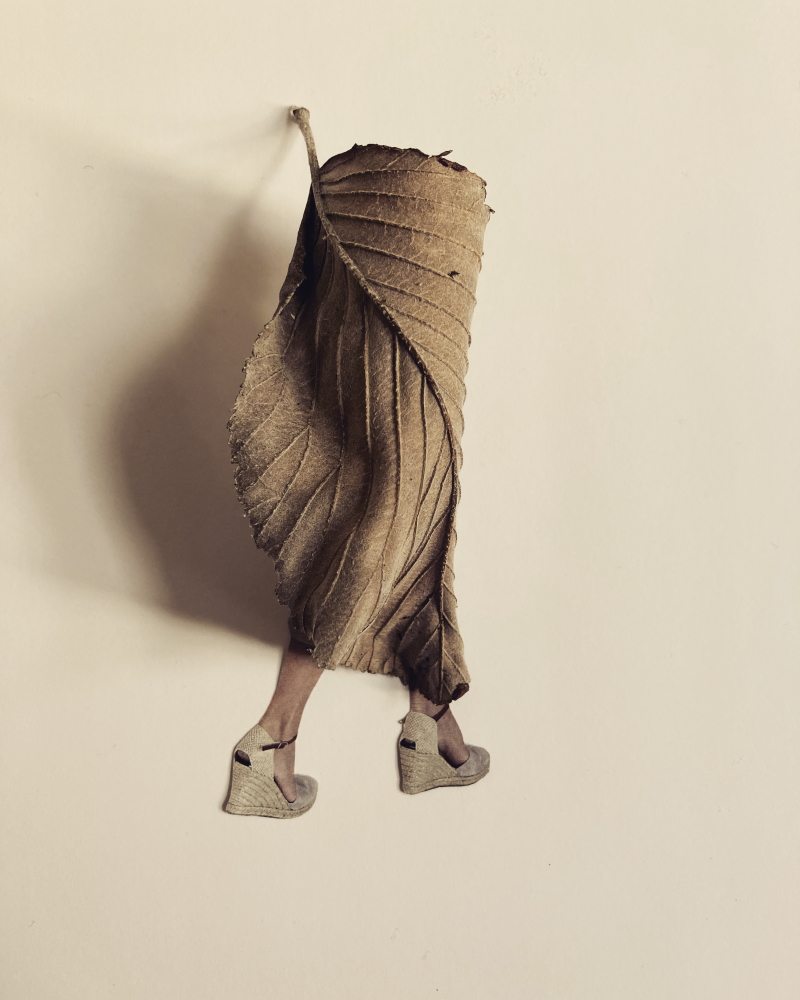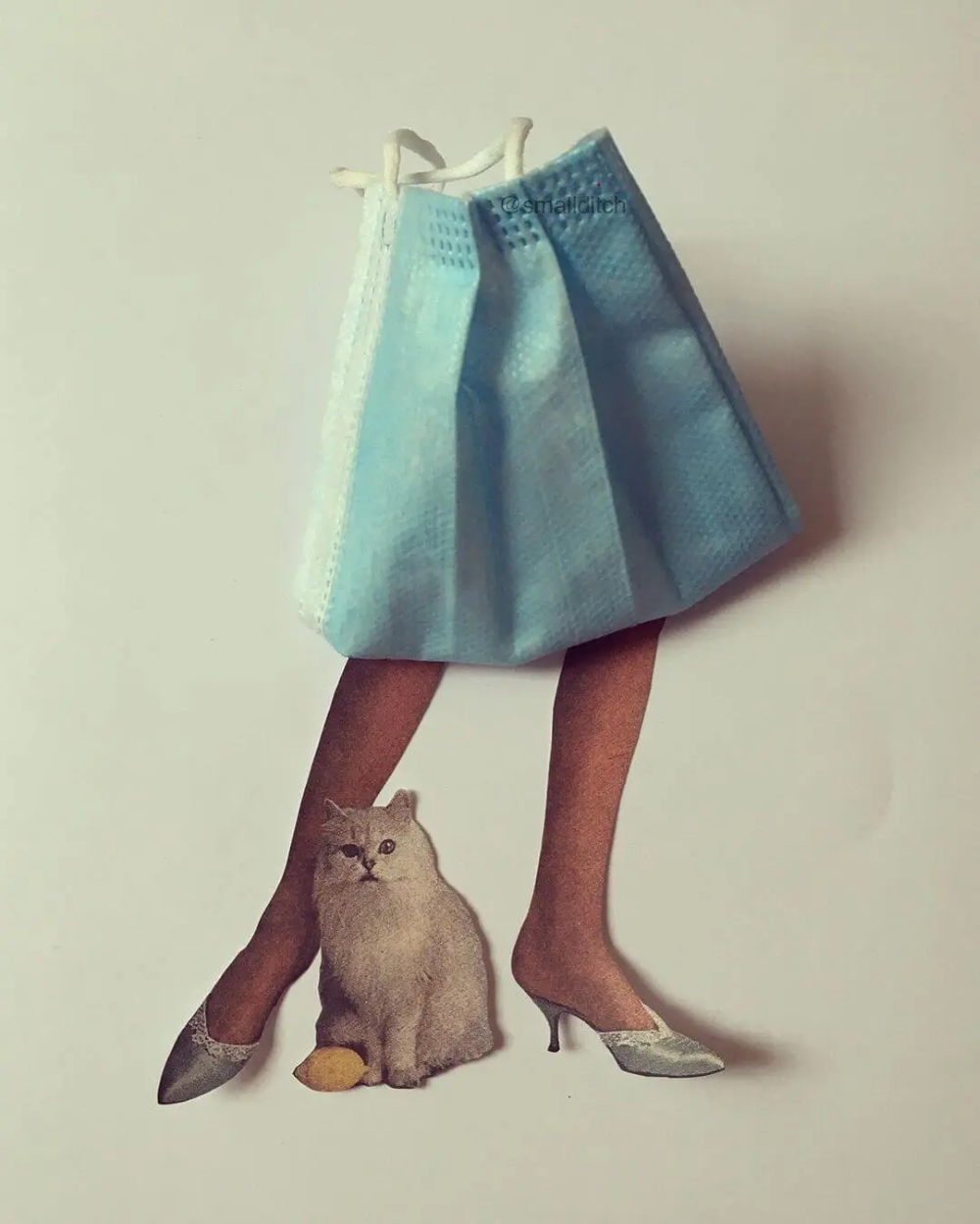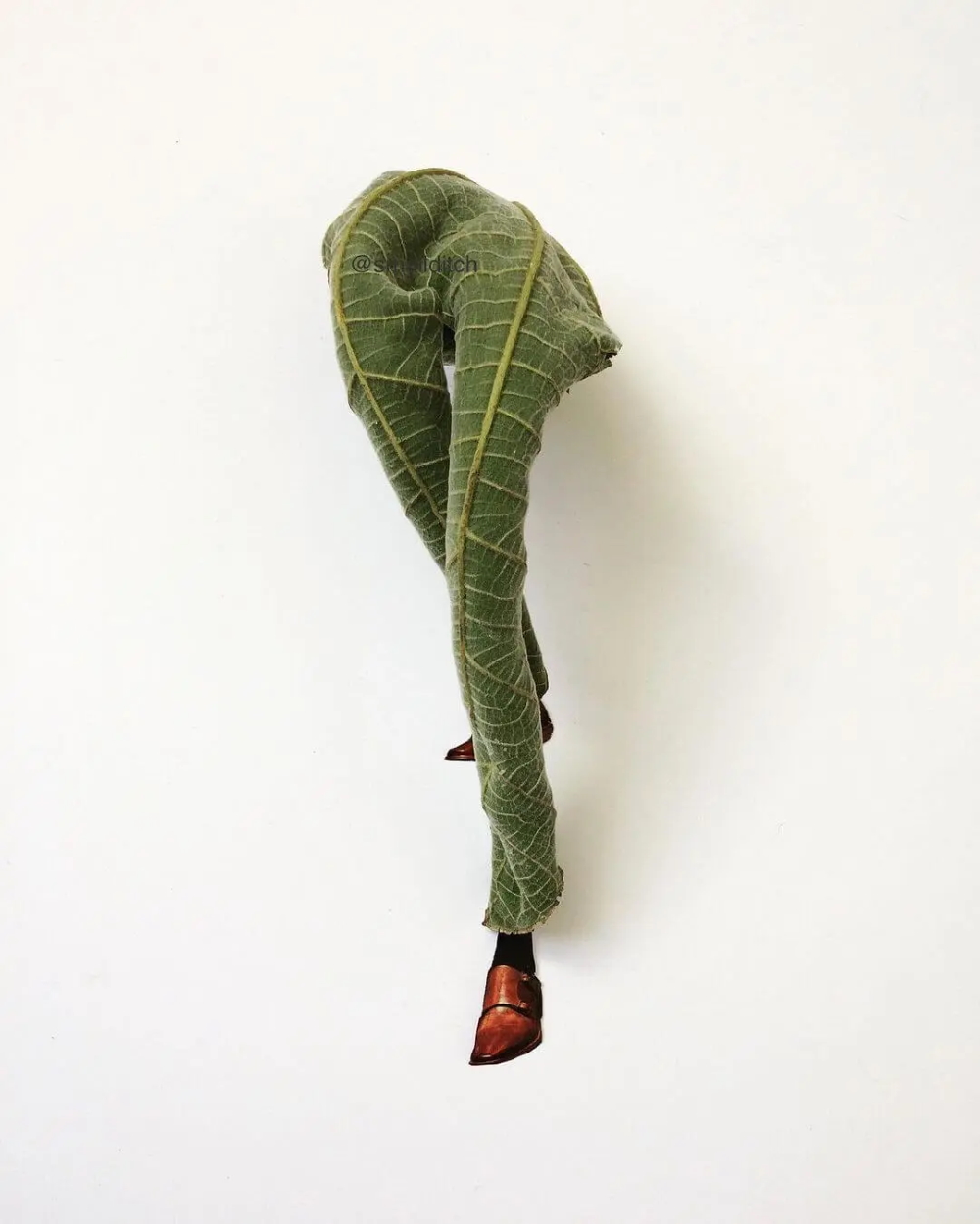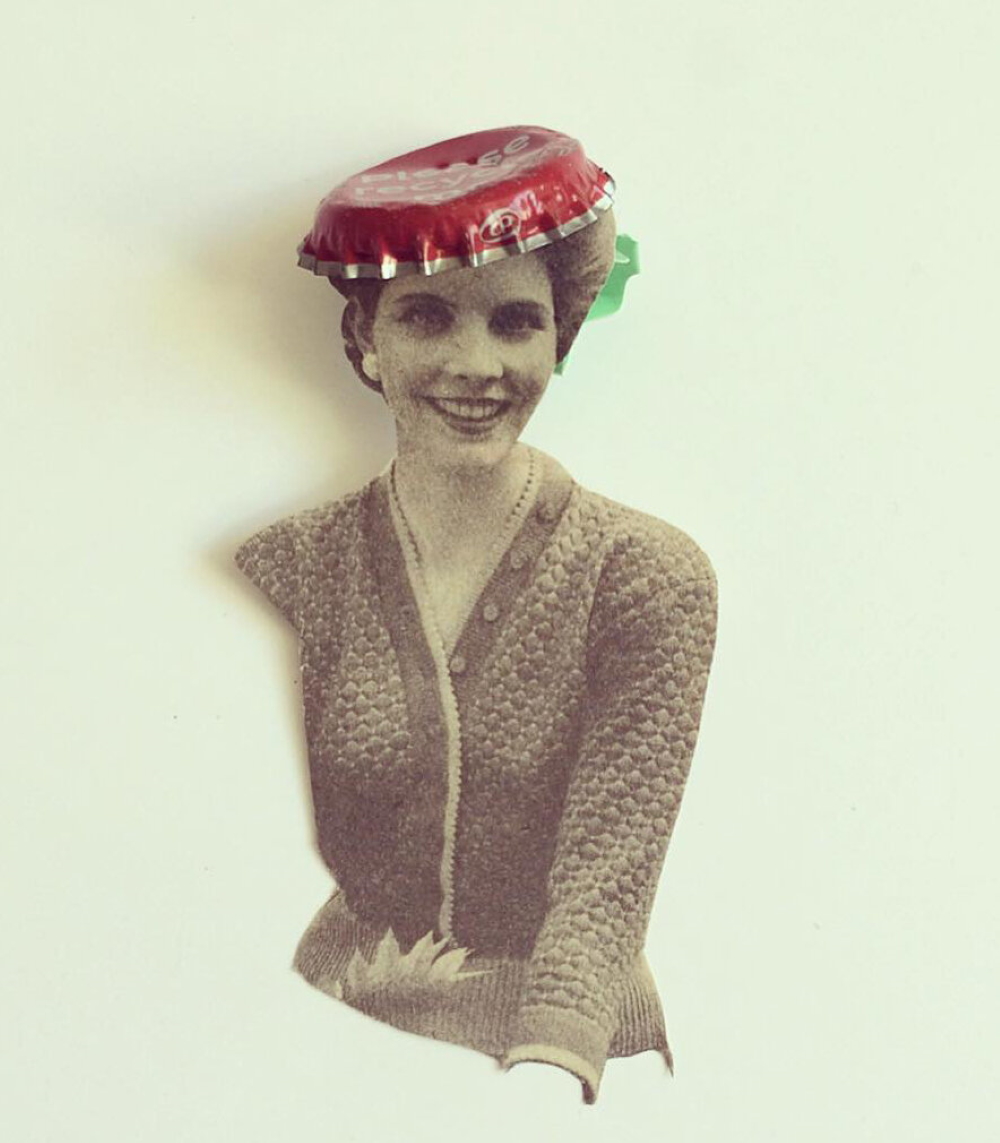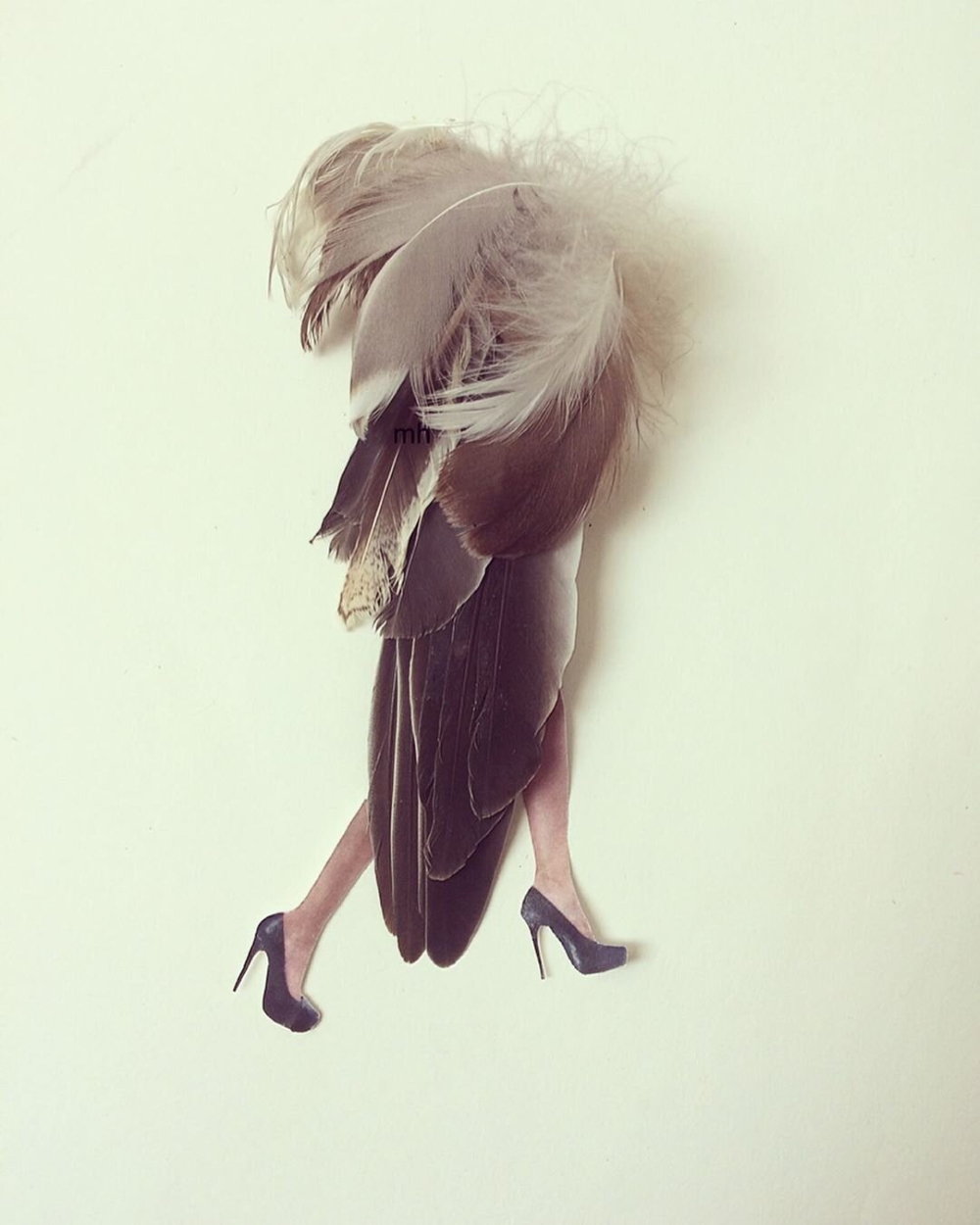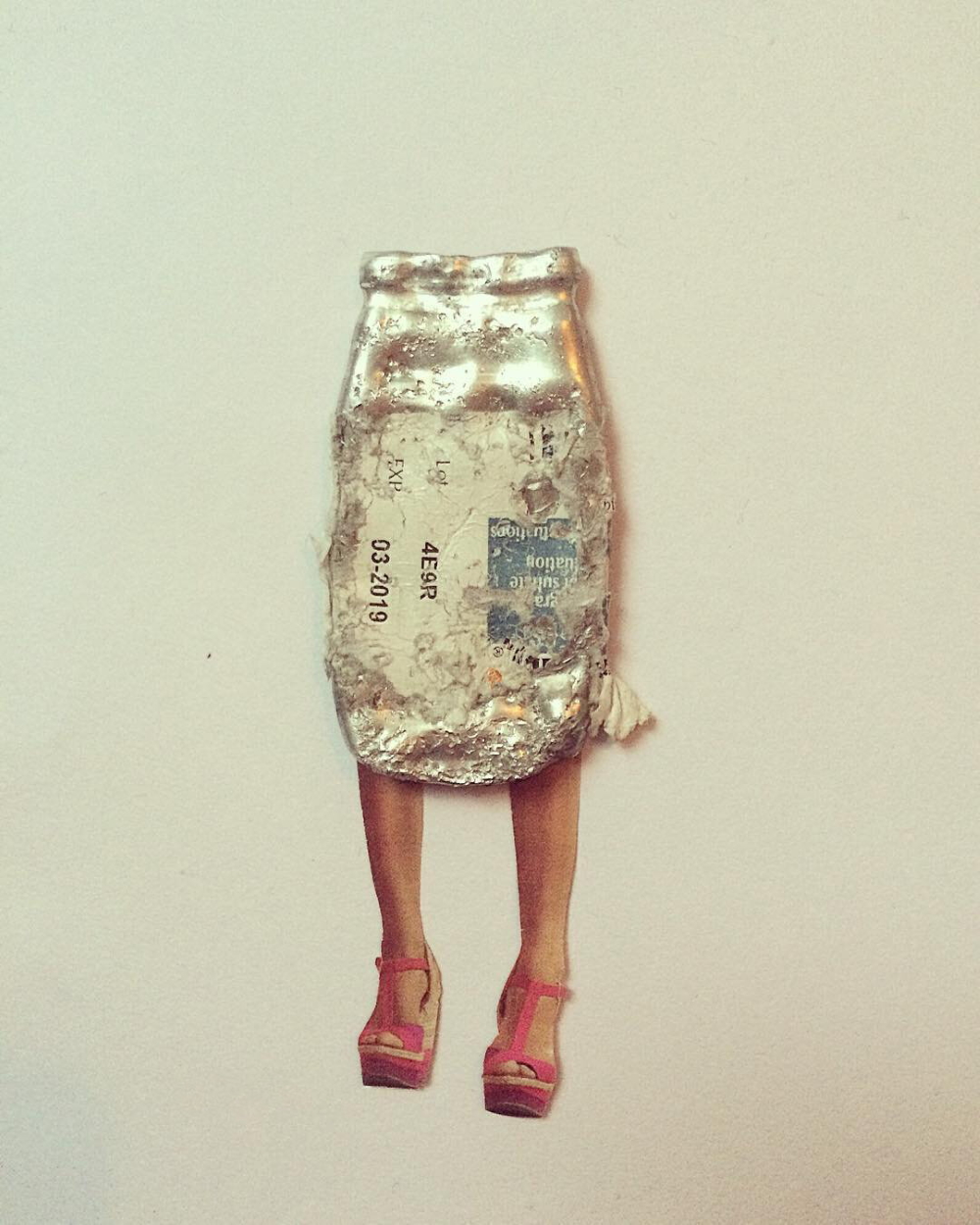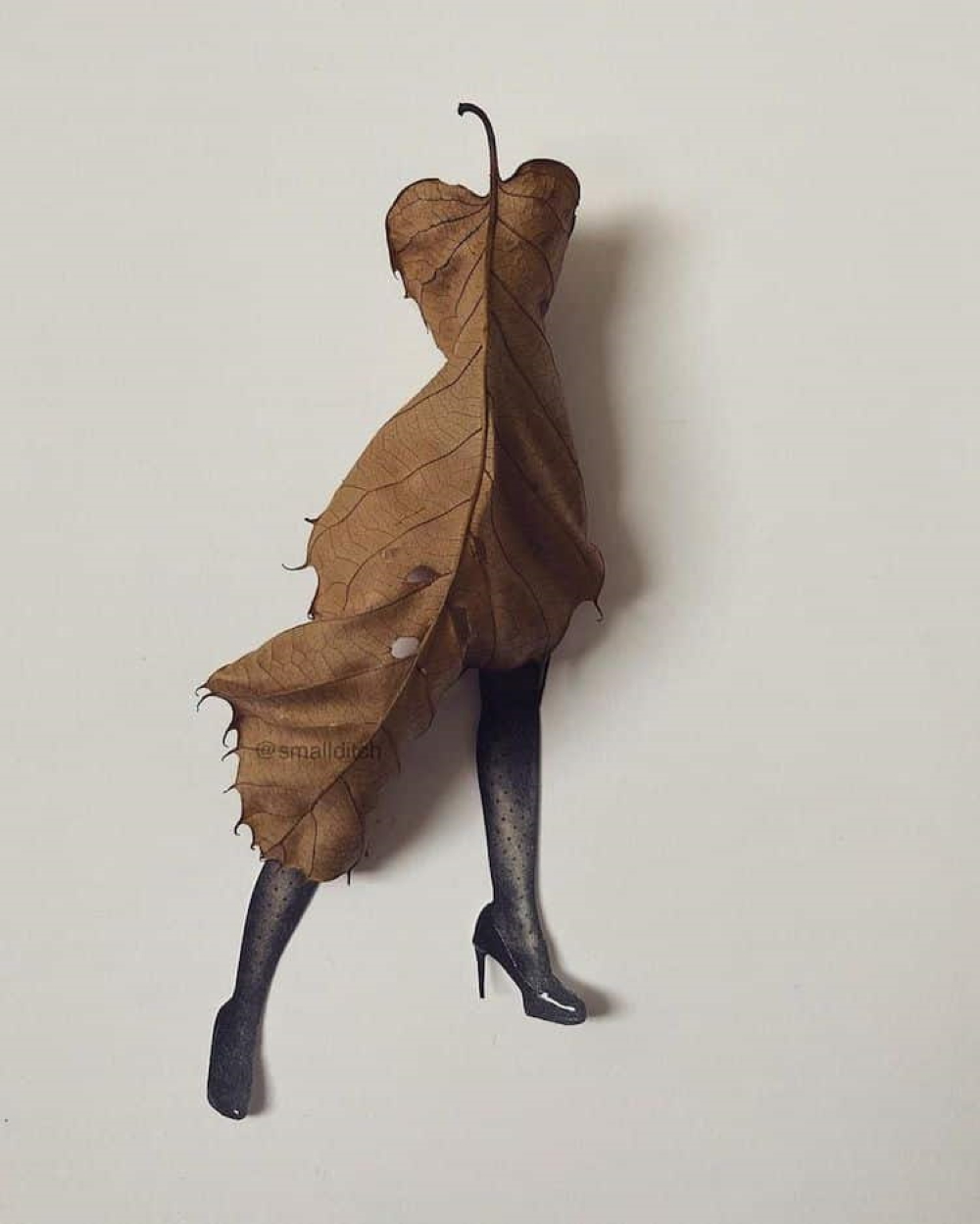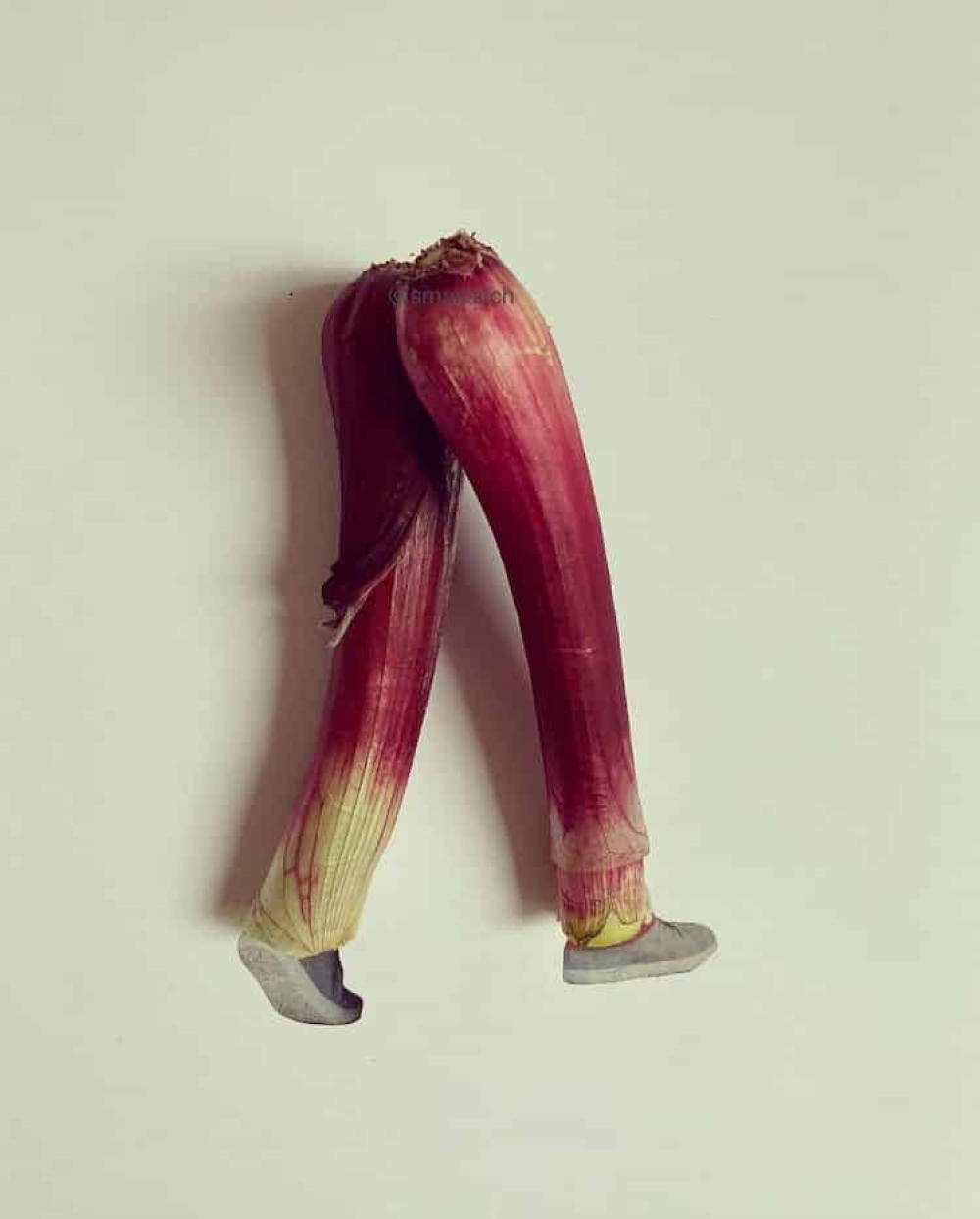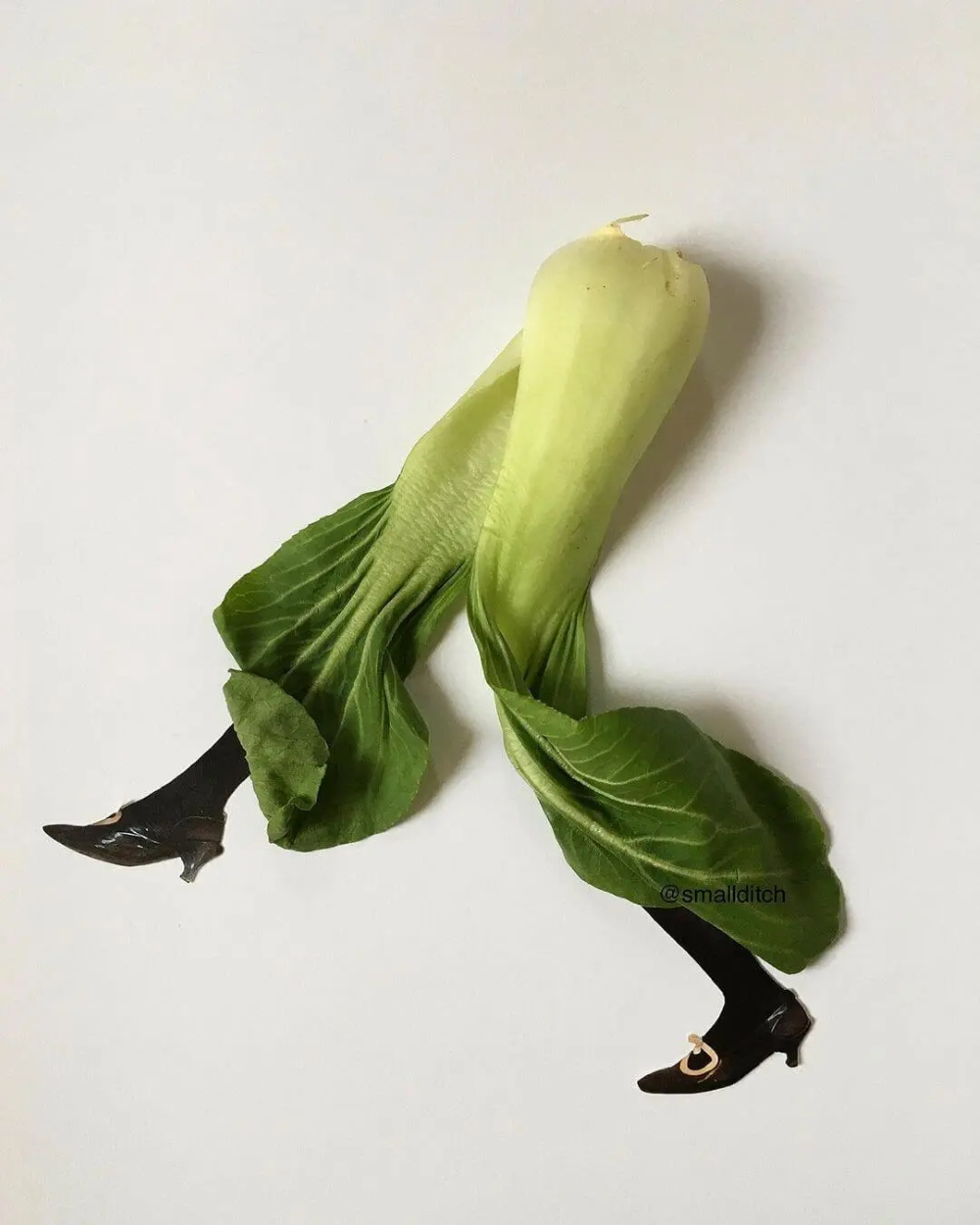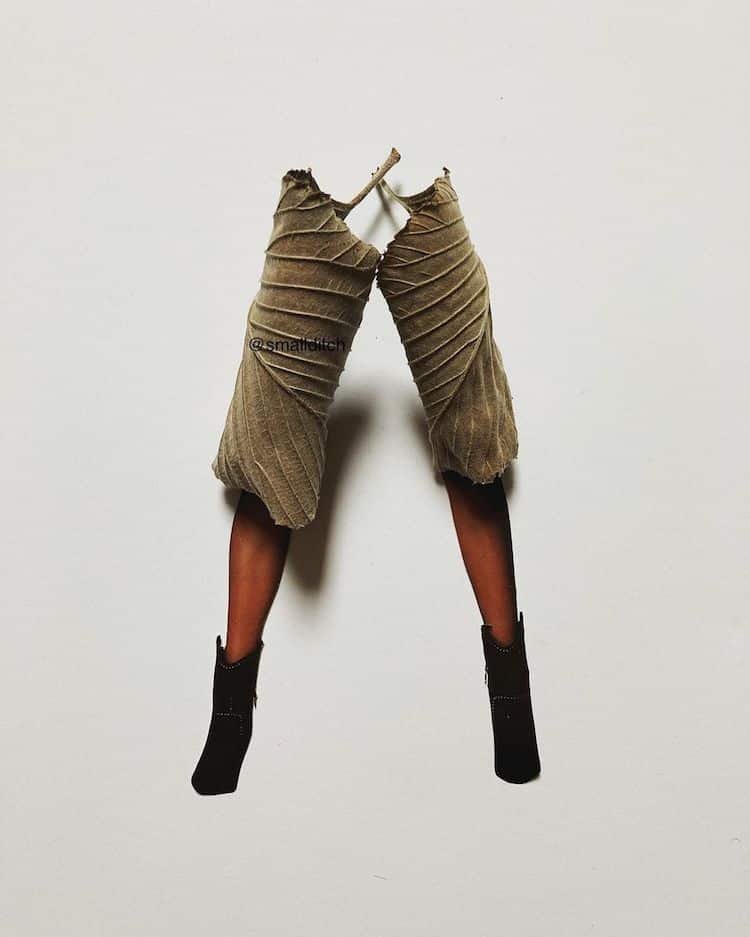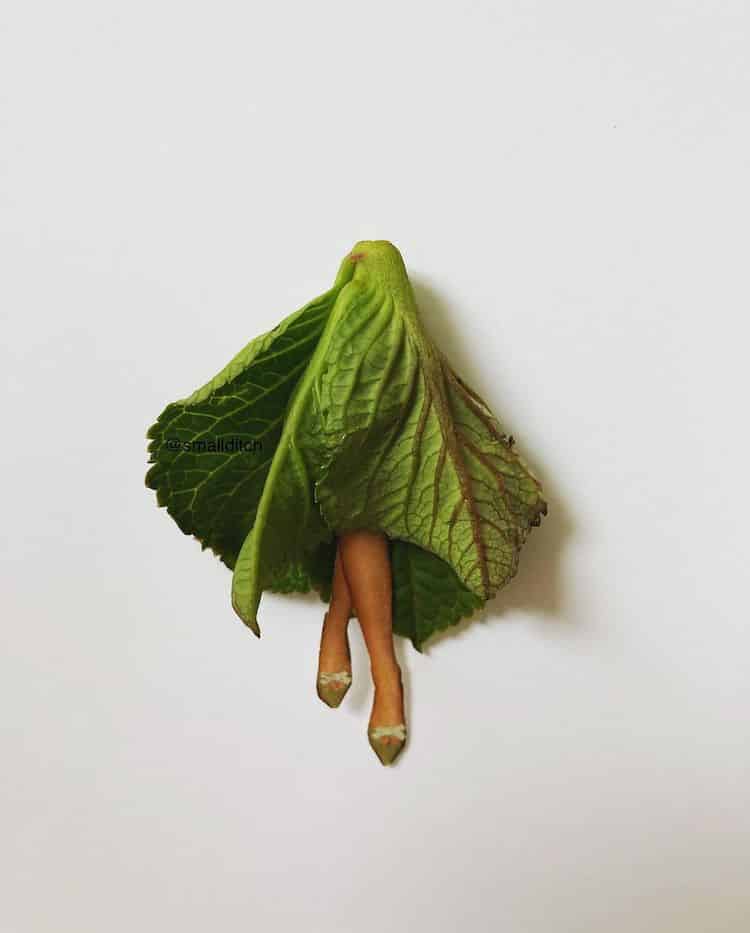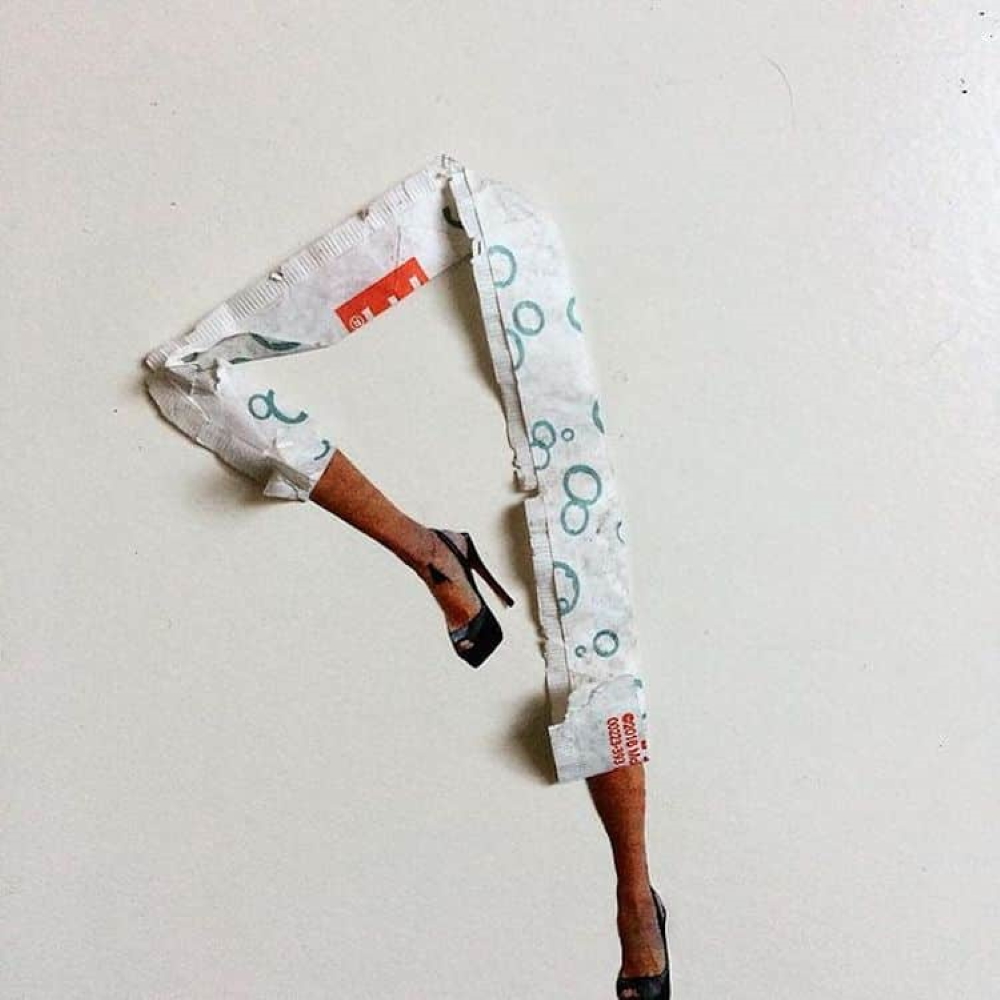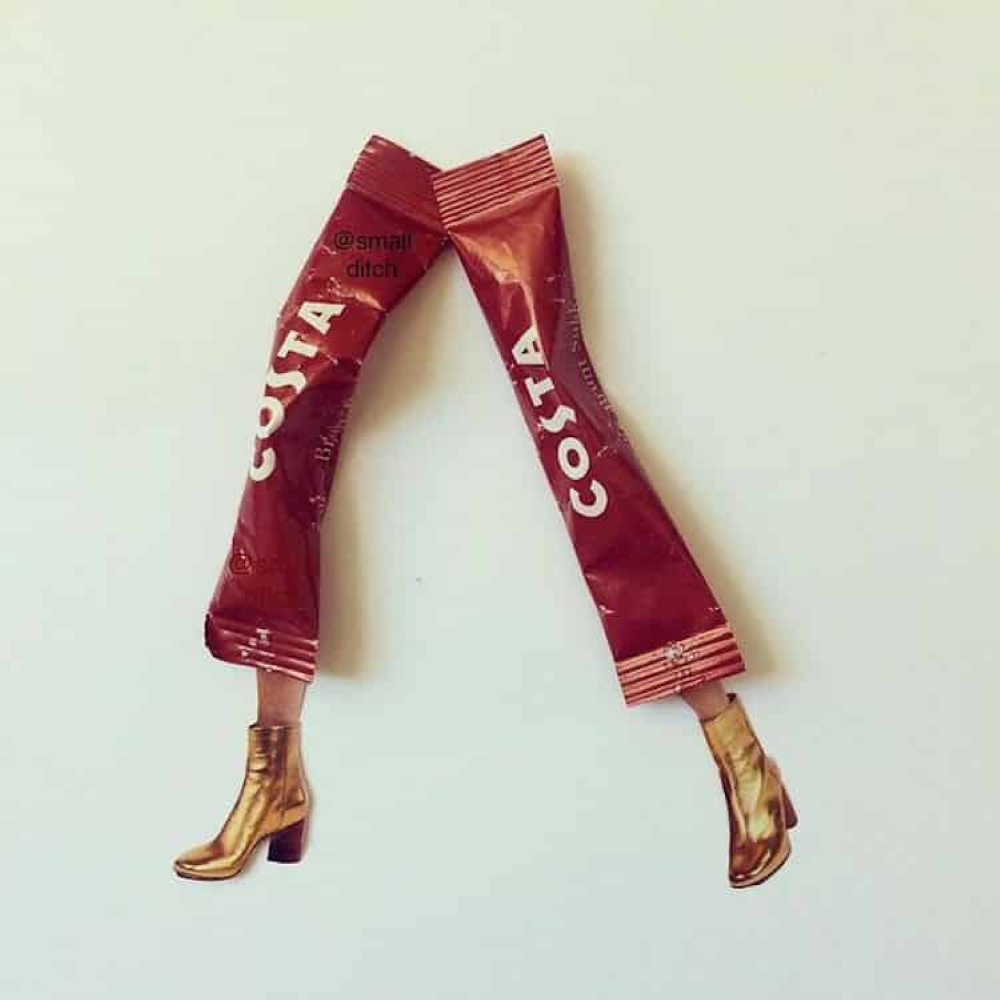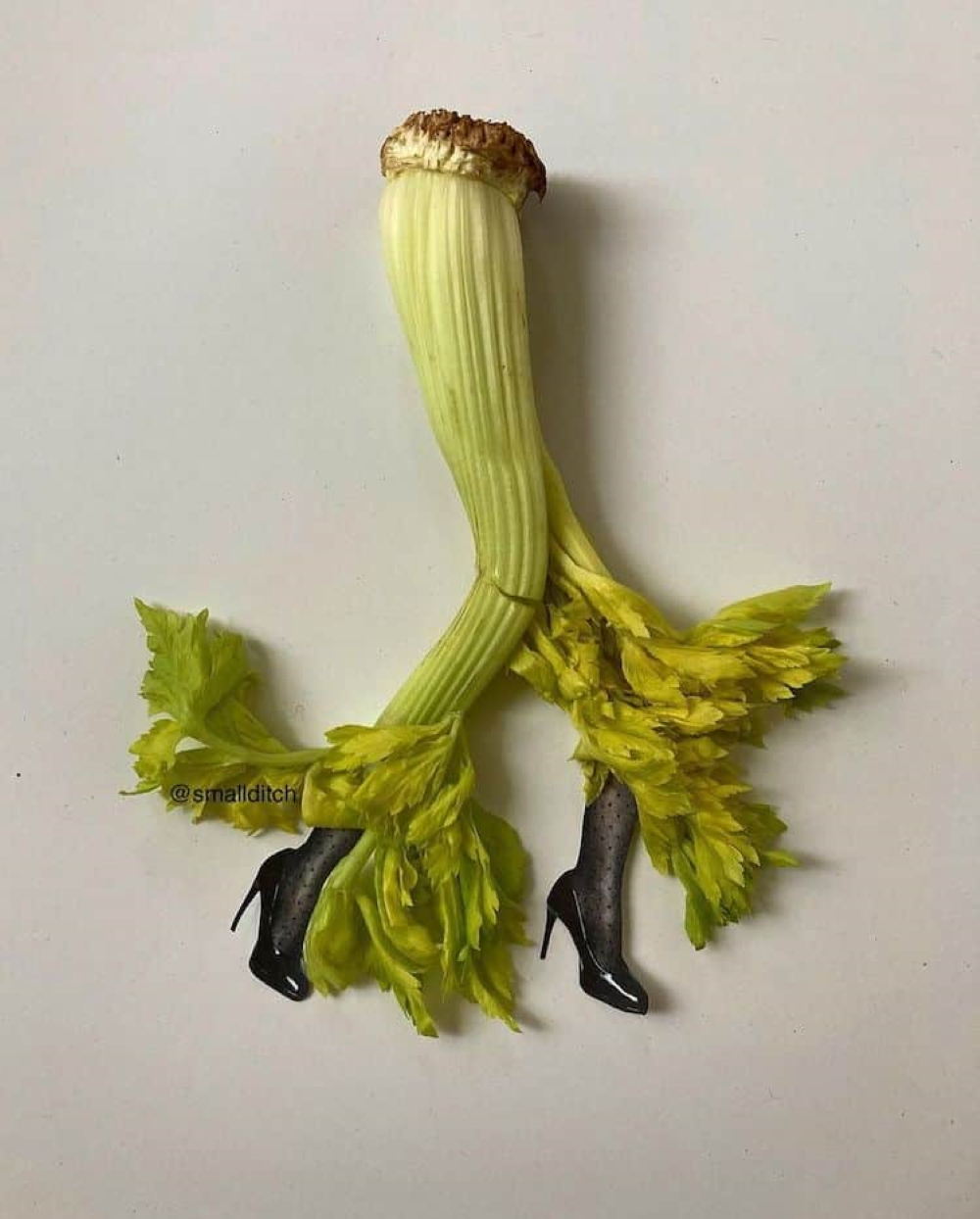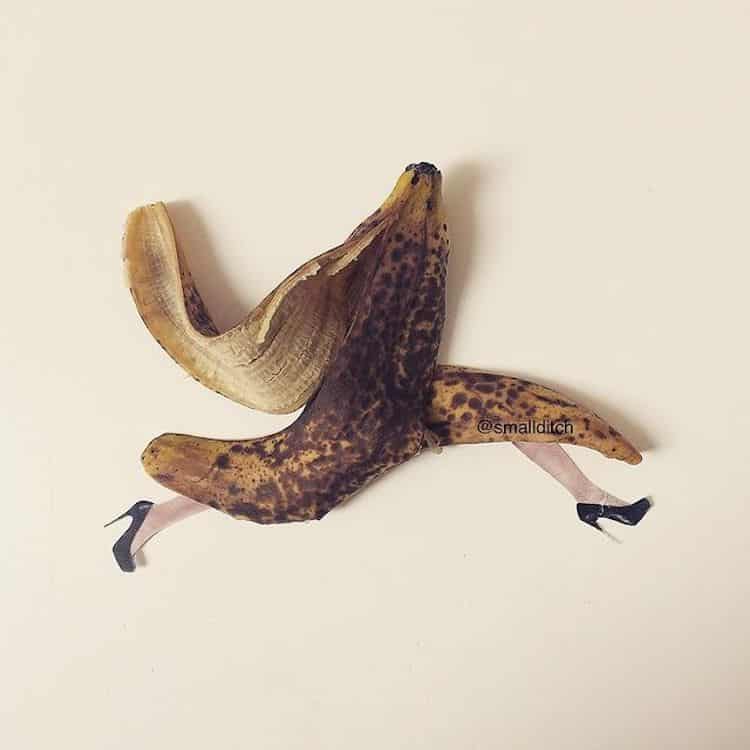Martha Haversham
interdisciplinary contemporary artist
GB
‘One person’s trash is another person’s treasure’. This saying sums up the intention behind this interdisciplinary contemporary artist’s work who runs, by self-description, a „found fashion atelier of haute couture & natural objects collage & still life“ and is interested in the aesthetic value of trash. Within the framework of her project called "Smallditch" Martha Haversham creates mixed-media collage-styled compositions out of fruits, leaves, vegetables or foliage and household items in combination with magazine cutouts and her own photography. Her artworks are so original and delightful that the image maker even collaborated with fashion designer Stella McCartney, daughter of the former Beatle, on a campaign!
Martha Haversham
interdisciplinary contemporary artist
GB
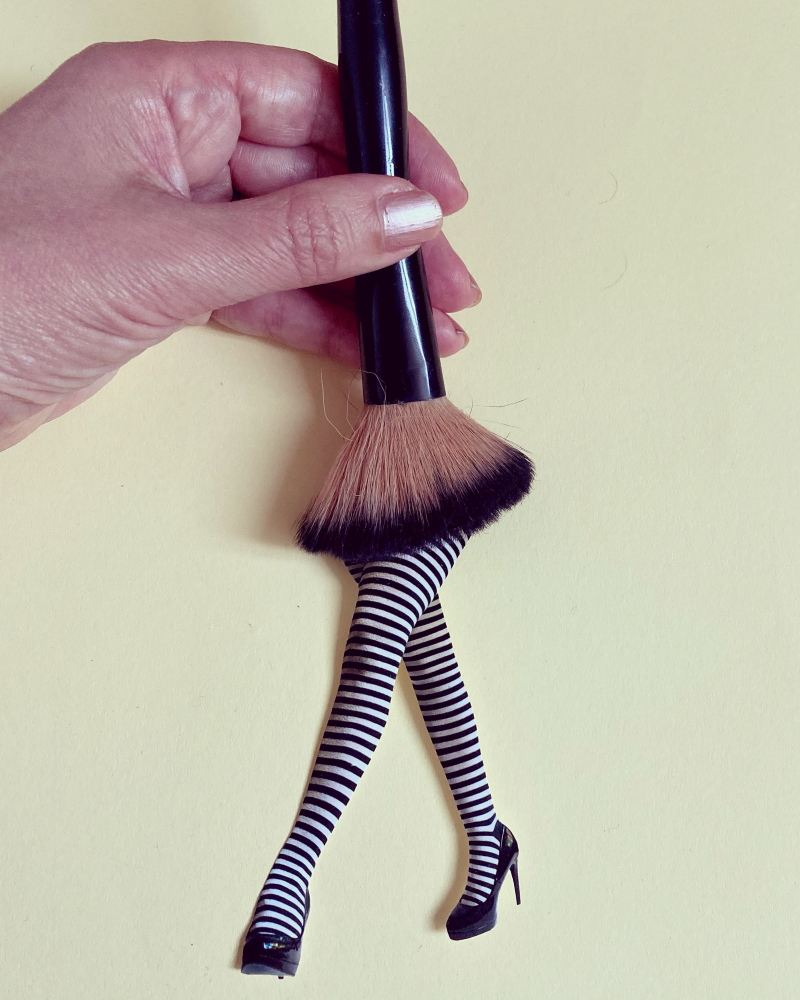
„A crumpled brown leaf, for example, resembles a striking strapless gown. Likewise, a stalk of celery looks like slim-fitting green pants with a dramatic flare opening“ (mymodernmet.com). All that in combination with magazine cutouts (often of legs) to resemble the typical look of fashion-shootings in trendy mags. Therefore only logical that ‚ELLE‘ (UK) and „Harper’s Bazaar“ (Japan) have cooperated with Martha Haversham already. In any case her works are perfect examples of pure creativity. This ability was already supported from early age. The native Londoner grew up with parents who encouraged her daughter in being inventive, imaginative and expressive. From this upbringing Martha Haversham can harvest up until today. „I“, she recalled while talking to luluguinness.com, „would be taken around skips as a child, in search of props for my father's (photo)studio shoots. He taught me about lighting, my mother (being a ballett dancer) about movement in space. Our home was a liveable set; natural items beautifully arranged and lit, full of picture books that I devoured.“
When starting out as an artist herself, the first objects for her artworks were found on walks and resulted in pedal skirts and leaf hats with cigarette butt trousers to follow later on. „I am taking the low status fabrics of our society and transforming them into objects of desire. That is very liberating. It is not about material wealth and excessive consumption, rather, an imaginative lens and infinite exploration.“ Some call the results „surrealism with playfulness“, while art connoisseurs recognise that her creations with the natural materials are in the tradition of ‚objet trouvés‘ („any ordinary object considered from an aesthetic viewpoint“, Collins Dictionary) and then being connected to cutout parts of nostalgic photos. Fact is: These dadaistic miniature models are not created for eternity because for example a banana skin mini skirt will change colour in about ten minutes. That's why their existence is documented on an iPhone. Those photos are taken without a background, so nothing can distract the attention. The results are posted on her Instagram feed @smallditch. There she explores small artworks in the context of public space since 2013. Five years later she started her „found trashion project“ and shows daily, seasonal collections of recycled millinery, separates and accessories found on the streets, salt marsh and beaches - with paper cuttings from self-portraits, recycle bins and charity shops - all local to where I live in Essex, UK.
The trained conceptual and visual artist who prefers the visual economy of creatives from the last mid-century like graphic and interior designer Alvin Lustig or the legendary photographers Richard Avedon, Irving Penn as well as Erwin Blumenthal says in the artist’s statement on her homepage: „My use of nostalgic triggers, playful miniature scale, digital platforms, found objects and natural materials are a conduit to the philosophy that art empowers, sustains and rewards, providing a profundity of endeavour and a curiosity equal to all.“
Mrs. Haversham’s quircky artworks that respond to the world satirically too are realized with an additional approach in mind. „The actual creativity is illuminating the path back to our imaginative childhood brains“, she told Unseen Sketchbooks. „My job as an artist is to hand you the keys to a stockroom brimming with far superior garments in your head, a constant source of earthly delight!“
Martha Haversham works and lives on the North Essex coast of England.
Interview July 2022
Ingenious idea: small finds get a second life as part of nostalgic fashion illustrations for the virtual runaway
INTUITION/IMAGINATION
How does intuition present itself to you – in form of a suspicious impression, a spontaneous visualisation or whatever - maybe in dreams?
I hop on and off mental lily pads throughout the day ... that’s why I am terrible at time management.
Will any ideas be written down immediately and archived?
I like the Notes feature on my iPhone, I'll paste a link or make a quick video, scribble on anything, flesh included. I suppose the manifestation of some of these ideas go straight into my trashion project called ‚Smallditch‘ - that is a daily window into my world.
Are great ideas based on intuition and do they reveal themselves in a kind of clear as well complete version that just has to be realized? Or is it endless trials and errors (after the first spark) that result in constant developments up until the final result?
Interesting ideas get better over time, they consolidate and evolve. Practice and repetition; if the idea is any good, you want to do more and it begins to get noticed. Before that, there is the hard slog of a daily 'dance class' to get there eventually.
What if there is a deadline, but no intuition? Does the first fuel the latter maybe?
It depends if there is any outside interference and faffing. Generally, a deadline is brilliant, it concentrates the mind. Mostly, I am a self-starter, I was brought up to be, I set my own deadlines every day, Instagram helps, it keeps me in shape.
INSPIRATION
What inspires you and how do you stimulate this special form of imaginativeness?
I am inspired by the possibility of finding an object, altering context, manipulating composition, capturing for posterity and increasing worth by giving this item an additional aesthetic value. It could be a squashed flower or a grubby cigarette butt, I’m not fussy, both are strong material. I am inspired by changing perception of waste through playful imagination, rediscovering the small-scale lens from childhood, transforming life’s detritus back into a magical place to be treated with wonder and respect. It is a rich place to be and my job is to hand you back the keys.
How do you separate the good from the bad and which ideas are worthwhile to be explored further or whether one idea has the potential of being outstanding really?
Lots of ideas that were interesting to do at the time have been shelved. Arriving at ‚Smallditch‘ has been years in the making and full of productive failures in a commercial sense. I would like to return to my charcoal text drawings for instance, but to do so would both confuse and dilute what I am doing now with my collages. This does not make them ‘bad’ ideas, rather, a cul-de-sac of technique and impracticality - they need a large space to exhibit and funds to frame - I keep them in scrolls, discolouring beautifully.
Has it to appeal to you primarily or is its commercial potential an essential factor?
To me, always.
Do you revisit old ideas or check what colleagues/competitors are up to at times?
There is a thriving collage community out there; it is wonderful to follow and support fellow artists. Nobody is a competitor, we all have our own artistic eye and experiences. A writer must read, a visual artist must experience art, be interested in the process and delight in the creativity of others. Social media has democratised this interaction and my work is much better as a result. In terms of revisiting old ideas. I would love to return to storytelling but need a little more work under my belt.
CREATIVITY
Which time/place/environment suits your creative work process the best (tranquillity or pressure) and which path do you take from theory/idea to creation?
I take a very short path from idea to creation, it normally takes on the momentum itself - I know what I want to do straight away. I would say I’m a perfectionist, I am pleasing only myself and I expect an excellent job. I don’t mind the odd insect or specks on my paper, but the look has to be right. Sometimes the ‘garment’ is more complex, perhaps an angle needs work or perhaps I need to wait for a deeper shadow. I can work in pretty much any place or environment, outside can be a problem, things blow away.
What is better in the realization process: speed and force creativity i.e. grasp the magic of the moment, or a slow, ripening process for implementation/elaboration?
With my current image-making, I am a fast worker; it’s very much a trashion shoot, music on and working in the moment.
If problems occur during creativity or one’s stuck even, how can these be solved?
A walk does wonders.
How important are self-doubt and criticism (by others) during such a process i.e. is it better to be creative on your own, only trust your own instincts, or in a team?
I’ve never really thought of this, but I don't have self-doubt, it is the one area of my life that I am ridiculously certain about, I enjoy what I do enormously and am highly resilient in a creative sense. I practice image-making as others might do prayers or shopping. I am not an illustrator, that is an entirely different, impressive skill-set and approach. I am not good at tinkering with an image that I believe is finished, I find it hard to make compromises, but happy to gauge a reaction from people - sometimes you need to pause and reflect, play some more.
Should a creative always remain true to him-/herself including taking risks & going against the flow or must one, for reasons of (commercial) survival, make concessions to the demands of the market, the wishes of clients and the audience’s expectations?
Well it is easy to say, but ideally, you should stick to who you are, what you know and what you love. If all three factors are met, then you are never going to please some people, so don’t waste time trying!
How is innovation still possible if one has established a distinctive style and, just in case, is it good to be ahead of one’s time even one hazards not being understood?
A good question. I think if you keep doing something, you become good at it and this ability of technique, albeit a simple one in my case, allows you to innovate, push the medium. I am now finding success photographing my trashion collages made with found objects. They are purposely seductive and relatable. Some of the materials are horrendous to the planet and our health. Humans now ingest micro plastic, it is found in our blood. We are becoming like my plastic Pippa doll, my little muse, I wish to explore that. There are other concepts behind the visual element - I have always been interested in different art forms such as dance and writing and can see ways to tie them together to make a larger body of work.
When does the time come to end the creative process, to be content and set the final result free - or is it work-in-progress with an endless possibility of improvement?
With an artistic career, I do not know anyone who stops, it is not in the nature of the personality. My best work is always in the future, it might just be in my head, another medium, we'll see.
In case of failure or - worse - a creativity crisis how do you get out of such a hole?
It’s okay to feel devastated, rejected, hurt.. Those feelings are only strong because you care so much about what you do. I would be worried if serious setbacks did not cause some passionate reaction. Experience tells you just to redouble your efforts and face the challenge.
SUCCESS
Should/can one resist the temptation to recycle a ‘formula’ one’s successful with?
If you are having fun, why stop?
Is it desirable to create the ultimate/timeless work, but doesn’t “top of the ladder” bring up the question of “what’s next?” i.e. isn’t such a personal peak “the end”?
It is for others to judge if a work is at the pinnacle. Because I never know what I am going to find, I am always excited by the possibility of the new - it could be found on a street, a beach or a compost heap - that opens up a lot of potential to improve, so no, I never sit back.
MY FAVORITE WORK:
„I have launched many plastic trashion collections, but I love picking up nature’s detritus and leaves in particular. We have some cherry trees near to where I live and they supply me every season with the most exquisite pattern-cutting and pleats. This skirt delighted me - the natural lighting reveals the ‘body’ beneath and as someone interested in physicality and the surreal, this one is memorable.“
